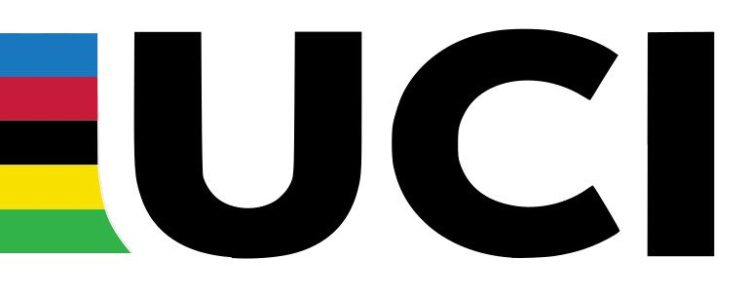Riding With Relief: Understanding and Addressing Cycling-Related Low Back Pain
By Christopher Schwenker
Cycling and Low Back Pain: Understanding the connection and developing a proper injury prevention and treatment strategy
Chances are that you or someone you know has suffered from low back pain. In 2020, low back pain (LBP) impacted 619 million individuals worldwide, nearly 10% of the global population. LBP constitutes the largest share of the world’s disability burden, comprising 7% of all years lived with disability (YLDs). The World Health Organization (WHO) projects a rise in cases to 843 million by 2050.
Low Back Pain is the Fourth Most Common Cycling-Related Injury
Due to the unique positioning and postural demands cyclists encounter, it’s even more likely that you or one of your mates experienced LBP.
When researchers asked 63,000 recreational riders about their non-traumatic cycling-related pain history, over forty percent complained of symptoms that limited or prevented them from riding. LBP was the fourth most common injury reported by researchers in the 2022 study published in The Physician and Sports Medicine.
The study revealed that 7.7 percent of recreational cyclists surveyed reported experiencing lower back pain in the past year.
While cycling, LBP often doesn’t stem from a specific pathology, syndrome, condition, or traumatic injury. While there are various diagnosable spinal conditions, such as herniated discs, spinal stenosis, and degenerative disc disease, among others, you must rule these out.
It’s crucial to seek medical care if you experience persistent sharp or stabbing pain after riding, numbness or tingling in your extremities, loss of bladder or bowel function, sudden profound weakness in a muscle region, or lack of coordination or balance in your extremities.
Causes of Cycling-Related Low Back Pain
Extended rides with a forward-bent trunk can cause tension in the lower back muscles and increased pressure on the lower spine. The persistent position also tightens the hip flexors and hamstrings and weakens the glutes.
Prolonged time incorrectly positioned in the saddle contributes to fatigue of the spinal muscles, compromising their ability to support the trunk, resulting in progressively worsening pain. As leg fatigue occurs, posture may decline, exacerbating the problem.
A recreational cyclist pedals 5,400 times an hour during an average bike ride (at 90 rpm). If their bike fit isn’t perfect or they have an underlying muscle imbalance or postural abnormality, the cumulative irritation manifests as LBP and other repetitive use injuries.
What Should You Do to Avoid and Treat Cycling-Related Low Back Pain
Thankfully, if the pain you feel is directly related to your time in the saddle, there are steps to take to prevent and treat your discomfort.
- Check your bike fit: An excessive forward bend at the trunk causes the hip to maintain a flexed position without the opportunity to open up. You can correct this by adjusting the crank length, handlebar size and position, saddle height, and fore-aft position to avoid the excessive range of hip motion at the top of the pedal stroke or rocking in the saddle.
- Remain relaxed: Avoid the tendency to become tenser as the ride progresses, which can decrease the time it takes for your back muscles to fatigue and become painful.
- Focus on cadence and hand placement: Maintain a comfortable cadence and smooth pedal stroke while varying your hand placement on the bars from the drops to the hoods to relieve tension in your back.
- Follow a consistent recovery strategy: A progressive periodized training and recovery plan is essential to optimize performance and avoid injury.
- Add Core Strengthening To Your Routine: Extended seated positioning fatigues the trunk muscles, leading to LBP. Incorporate core and trunk strengthening into your plan to prevent this from limiting your ride.
- Address muscle imbalances: Focus on targeted strengthening and stretching, ensuring exercises are pain-free and without residual soreness. Maintain a neutral and stable back during exercise performance.
Muscle Imbalances Can Cause Cycling-Related Low Back Pain
The sedentary nature of modern life, characterized by prolonged sitting at work or on the bike, can potentially affect cycling performance and overall health by contributing to cycling-related lower back pain.
Prolonged sitting can lead to adaptive shortening, particularly in muscles like the hip flexors, due to remaining in a flexed position for extended periods. This dynamic muscle shortening can cause imbalances, reduce range of motion, impair pedaling efficiency, and potentially lead to discomfort or injury.
Reciprocal inhibition is when habitual tightness in one muscle causes the muscle on the opposite side of the joint to lengthen. This imbalance disrupts the reciprocal inhibition process, leading to overactive muscles excessively inhibiting antagonist muscles, which can result in inefficient movement and decreased pedaling power.
Stretching For Cycling-Related Low Back Pain
Regular stretching can significantly alleviate adaptive muscle shortening resulting from prolonged sitting, enhancing flexibility, expanding the range of motion, and promoting optimal pain-free performance.
Focus on these key muscle groups:
- Hip Flexors: Counteract tightness and shortening caused by prolonged sitting with regular hip flexor stretches to restore flexibility and length.
- Hamstrings: While not directly affected by sitting, tight hamstrings can impact posture and pedal stroke. Stretching exercises can enhance flexibility in this area.
- Upper and Mid-Back Muscles: Incorporate stretches to maintain flexibility and function in spinal muscles. These are particularly crucial after extended periods of sitting or cycling.

Hip flexors stretch and hamstring stretch with strap

Low back stretch
Strengthening For Cycling-Related Low Back Pain
Incorporate targeted strengthening exercises into your training routine to address imbalances caused by weak glutes, abdominals, and tight hip flexors. These exercises can restore muscle balance and optimize dynamic muscle shortening and reciprocal inhibition processes.
Focus on key muscle groups:
- Glutes: Perform exercises like bridges and hip thrusts to strengthen the glutes and counteract weakening from prolonged sitting.
- Abdominals and Spinal Muscles: Strengthen core muscles, including abdominals and spinal extensors, to enhance cycling posture and efficiency.
- Hamstrings: Despite tightness from sitting, hamstrings may also be weak, so include hamstring strengthening exercises.

Bridge exercise and front plank core strengthening exercise
Proper Bike Fit for Cycling-Related Low Back Pain
Ensure a proper bike fit to counteract the adverse effects of prolonged sitting and promote efficient cycling. While a professional fit is ideal, consider these suggestions:
- Saddle Height: Adjust to allow a slight knee bend at the bottom of the pedal stroke, preventing excessive hip flexion.
- Saddle Fore/Aft Position: Position to distribute weight evenly and avoid extra pressure on hands, arms, and lower back.
- Handlebar Height and Reach: Ensure a comfortable, sustainable posture by avoiding excessive reach that strains the lower back and neck.
Repetitive use injuries are common among recreational cyclists, often leading to progressively worsening pain in your lower back pain and other areas. However, understanding the source of pain and taking proactive measures can prevent, treat, and alleviate these injuries.
Watch this space for more cycling-related injury prevention and treatment tips!
About the Author
After over twenty years as director of his private physical therapy practice, Chris stepped away to pursue his passion for virtual cycling and writing. He founded TheZommunique.com, the leading source of independent cycling esports journalism, is a frequent contributor to Cycling Weekly, Cycling News, and road.cc, and co-hosts The Virtual Velo Podcast. He cycled 3,900 miles across the US in 2022 to support his virtual cycling non-profit, The DIRT Dad Fund.






















